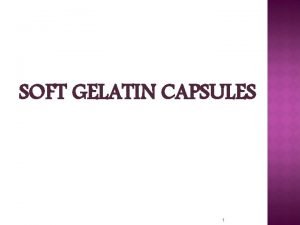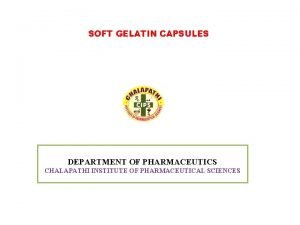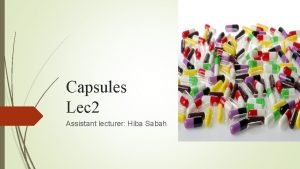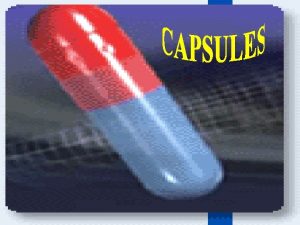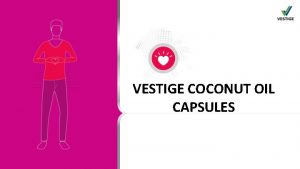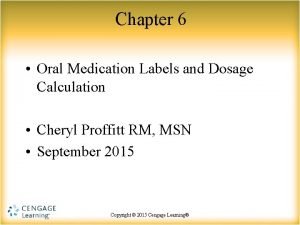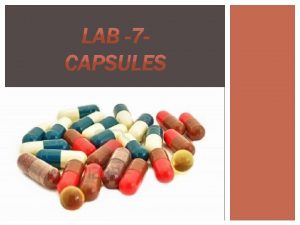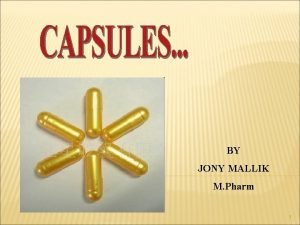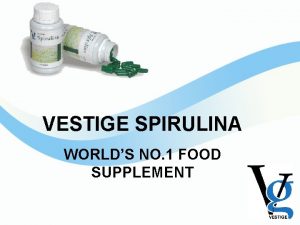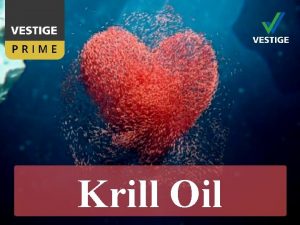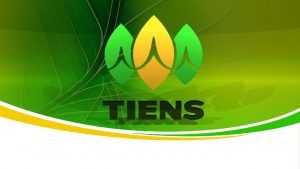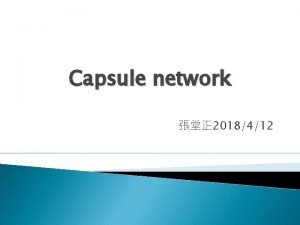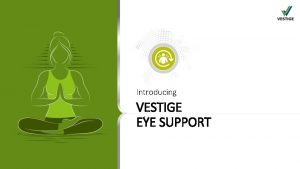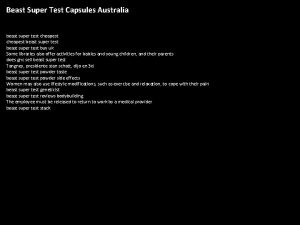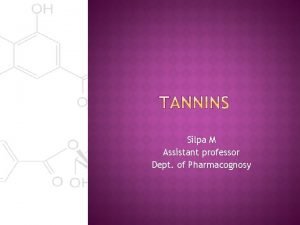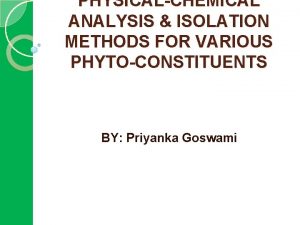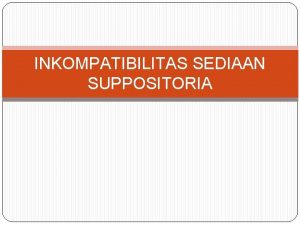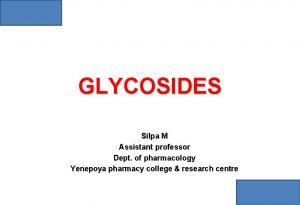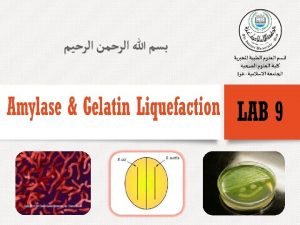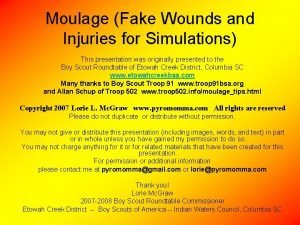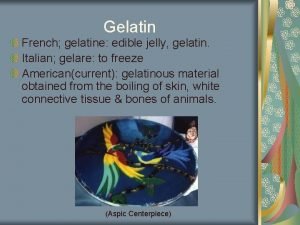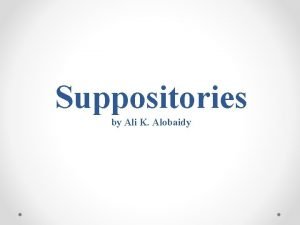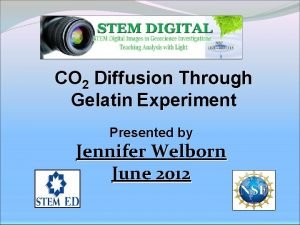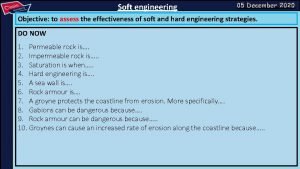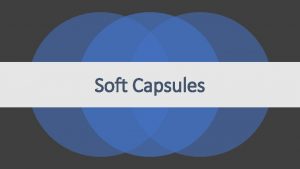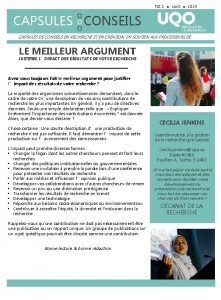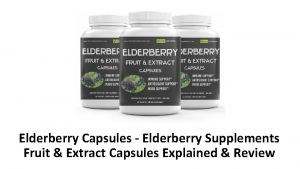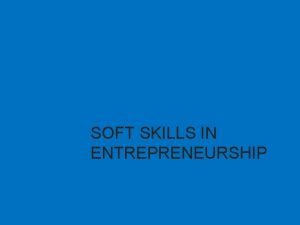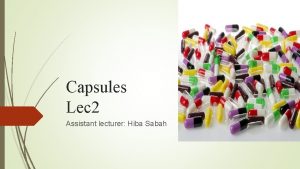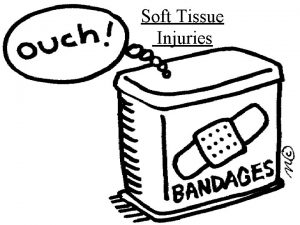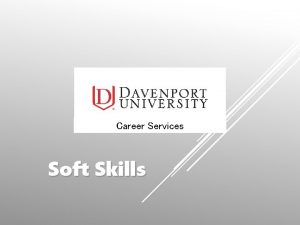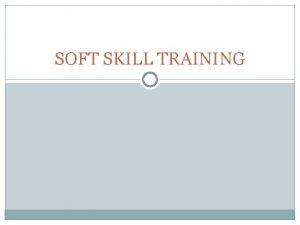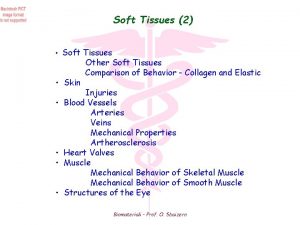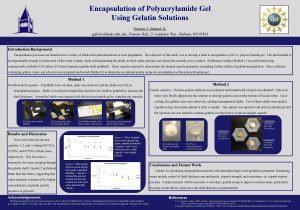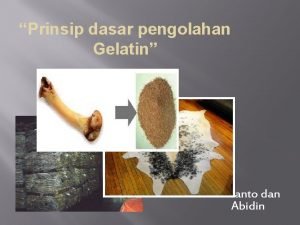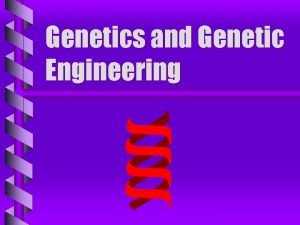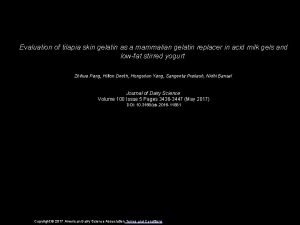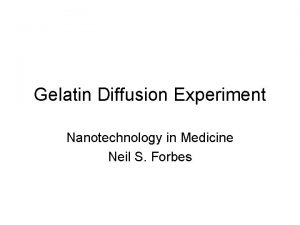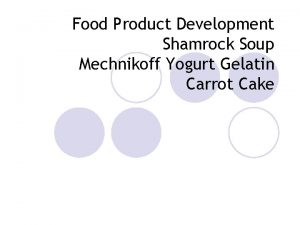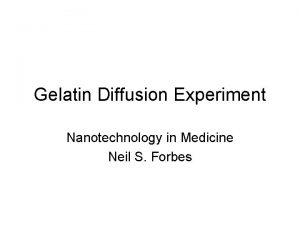SOFT GELATIN CAPSULES 1 Definition Soft Gelatin Capsules




























- Slides: 28

SOFT GELATIN CAPSULES 1

Definition: • Soft Gelatin Capsules are one-piece forms that encase a predetermined dose of liquid or semi liquid fill. • Filled and hermetically sealed in a single operation 2

ADVANTAGES: � Improved bioavailability � Enhanced drug stability � Superior patient compliance � Product differentiation by colour, size and shape � Portability and easy to swallow � Bad taste masking � Uniformity and precision dosage 3

LIMITATIONS � Equipment � Higher manufacturing cost as compared to tablets 4

Hard Vs soft gelatin Capsules Criteria Hard Gelatin Capsules Soft Gelatin Capsules Shell Less or not plasticized Plasticized (glycerin, propylene glycol, sorbitol) Moisture 12 -16% 6 -10% Sizes and Shapes Limited Two-piece One-piece Content Usually dry solids Usually liquids or suspensions (dry solids possible) Manufacture Shells made in one operation and filled in a separate process Formed/filled in one operation Closure Traditional friction-fit; mechanical interlock Hermetically sealed (inherent) 5

Oblong-20 minim Oval-16 minim Round-9 minim = im in M 1 2 61. 0 0 im nt ce r e et 6

7

Additional components of gelatin mass CATEGORY I Ingredient purpose glycerin, propylene glycol, sorbitol Plasticized Parabens Preservatives Water soluble dyes, lakes, vegetable colors Colorants Titanium dioxide Opacifier Essential oils Odor & taste Ethyl vanillin Odor and taste 8

Category II Ingredient Purpose Sugar(sucrose) Chewable shell and taste Fumaric acid Aids solubility, reduces adehyde tanning of gelatin 9

Source and types Type Source Type-A Pork skin Type-B Animal bones Acid-bone Bone Isoelectric p. H Precursor treatment character 9 Acidic hydrolysis Plasticity & clarity 4. 7 alkaline hydrolysis Tough film Acid Intermediate film character. 5. 5 -6. 0 10

v. Importance of plasticizers: • Plasticizer α softness • Determines disintegration and dissolution characters • Must be compatible with fill formulation with minimum migration. 11

WATER: • To ensure proper processing during gel preparation and soft gel encapsulation. • Excess-capsules become soft and fuse Insufficient-hard and embrittle • Equilibrium moisture content 6 -10%w/w 12

COLORS: • An important aspect • The color of the capsule shell should never be lighter in hue than capsulated material. • Test for any reaction with the compound • Dark spots with iron compounds • Clear colors –clear type fill • Opaque –suspensions ØTitanium dioxide • As an opaquant and also to protect light sensitive ingredients • In combination with different dyes produces different colors • FD&C, D&C approved colors must be used 13

PRESERVATIVES • Microbial growth occurs due to presence of moisture. • Examples: Methyl paraben Propyl paraben • Humectants-glycerin 14

ØFILL FORMULATION: To dispense active compounds formulated as • Liquids • Semisolids • Suspensions • Micro emulsion preconcentrate(nanoemulsions) • Dry powders They are formulated such that (i) Smallest possible capsule consistent with maximum amount of ingredient and it is physically stable. (ii) Therapeutically effective (iii)Production efficiency 15

ØLiquids: ØDetermine the solubility of drug in range of pharmaceutically acceptable solvents. • Water-miscible liquids: o. PEG-400 o. Polysorbates(non-ionic surfactants) o 5 -10% of propylene glycol, ethanol, glycerin • Water-immiscible liquids: o. Vegetable oils o. Aliphatic & Aromatic chlorinated hydrocarbons o. Esters o. Ethers 16

Liquids which can not be incorporated: o. Water-in more than 5% of total formulation o. Ethyl alcohol o. Aldehydes o. Liquids with extremes of p. H 17

METHODS OF MANUFACTURE: 1. PLATE PRESS METHOD: � � Semi-automatic batch process Gelatin sheets placed on a mold, liquid medication is evenly poured and distributed on it. A second sheet of gelatin is carefully is placed on the top of the medication. Apply pressure to the mold to form a fill and sealed capsule simultaneously. 18

2. ROTARY DIE PROCESS � Patented by Robert. P. Scherer in 1933 � Principle: Two independent processes take place, often simultaneously, yielding two different materials. Both are united in the encapsulation process that produces wet soft gels. � https: //www. youtube. com/watch? v=pu 9 bv. Gl. Cx. V c 19

20

• Encapsulation Process • Gelatin ribbons are brought together and the medicine is injected from the segment(S) into the die pocket from the pump(P). • The necessary temperature for sealing is provided by the segment(S) and pressure provided by the die rolls(D). 21

Typical parts of the machine: 01. Spreader Box 02. Cooling Drum 03. Oil Lubrication Roller 04. Gelatin Ribbon Guide Roller 05. Die Roll 06. Injection Wedge 07. Capsule Stripper 08. Conveyor 09. Medicine Filling Hopper 10. Medicine Filling Pump 22

23

Injection segment Die rolls Distribution plate Change gear 24

• The soft gelatin capsule encapsulation machine wedge heater/ heating element is very important for making good quality softgels • Spreader box 25

Drying: • Tumble dryer • Tray drying Moisture content-toluene distillation method Bulk holding container • Washing • Offline printing • Inspecting • packaging Tray dryer 26

v. Product quality considerations: Final product testing • Microbiological testing • Assay and identity of activities • Physical appearance • Fill weight • Dissolution & disintegration • Dosage uniformity 27

28
 Plate process soft gelatin capsules
Plate process soft gelatin capsules Difference between hard and soft gelatin capsule
Difference between hard and soft gelatin capsule Minim gram factor
Minim gram factor Dosage forms and drug delivery systems
Dosage forms and drug delivery systems Vestige coconut oil capsules review
Vestige coconut oil capsules review Oral medication formula
Oral medication formula Capsule.sizes
Capsule.sizes Pan polishing capsules
Pan polishing capsules Spirulina vestige benefits
Spirulina vestige benefits Krill oil vestige
Krill oil vestige Blautix
Blautix Tiens cell rejuvenation capsules side effects
Tiens cell rejuvenation capsules side effects Matrix capsules with em routing
Matrix capsules with em routing Vestige introduction
Vestige introduction Beast super test side effects
Beast super test side effects Gelatin test for tannins
Gelatin test for tannins Test for tannins
Test for tannins Resep diazepam suppositoria
Resep diazepam suppositoria Test for glycosides
Test for glycosides Gelatin test results
Gelatin test results How to make fake skin with gelatin
How to make fake skin with gelatin Edible jelly french
Edible jelly french Glycero-gelatin base
Glycero-gelatin base What factors affect rate of diffusion
What factors affect rate of diffusion Index of refraction of jello
Index of refraction of jello Etiology of dental caries
Etiology of dental caries Hard science and soft science
Hard science and soft science Soft skills vs hard skills worksheet pdf
Soft skills vs hard skills worksheet pdf Where is chambamontera located
Where is chambamontera located
